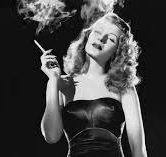Why this song?
What do the TV show The Sopranos, the disappearance of D.B. Cooper, and Bobbie Gentry’s 1960s hit song “Ode to Billie Joe” have in common? In the end, each one leaves us with a mystery, questions without answers.
People love a good mystery, especially ones that end with a Big Reveal, one that tells us whodunnit while tying up all the loose ends. Giving an audience a mystery that is left unresolved can create dissatisfaction. It’s definitely risky.
Yet, the unknown and unsolved can sometimes capture people’s imaginations. On the day after the final episode of The Sopranos with its abrupt blackout finale, it seemed as if everyone was rabidly arguing over just what had happened to Tony Soprano and his family. Four decades earlier, the song “Ode to Billie Joe,” a huge Pop/Country hit in 1967, left a world of listeners desperate to know what Billie Joe threw off that bridge.
With their latest release, “Brightside,” The Lumineers appear to be creating a mystery of their own, a lyric that might almost be called “Ode to Billie Joe 2.0.” There’s a bridge, a woman, and an unanswered question.
In this Song Guide, I’m going to focus on the lyrics of this song, putting aside melody and production. Let’s take a look at how The Lumineers create a compelling mystery lyric in “Brightside.”
SONG GUIDE
“Brightside” – The Lumineers
Songwriters: Jeremy Fraites, Wesley Schultz
TECHNIQUES TO HEAR AND TRY:
• Create a mental movie for your listeners.
• Add an aura of mystery to your lyric.
• Blend old and new song structures.
Listen to the song. Read the lyrics.
Watch the lyric video on YouTube.
Read the lyric here.
GENRE/STYLE: (Indie Folk)
(What is a genre? Watch this video.)
Indie Folk, like its older parent genre, Folk, is an acoustic-based genre with roots in traditional music. But there are plenty of modern elements added to the mix here—a strong rhythmic feel, tight performance, vivid lyrics, and melody twists that give the genre plenty of fresh, contemporary appeal.
The Lumineers helped to define the Indie Folk genre with their hit single “Ho Hey.” That song’s energetic beat and catchy chorus convey a lighthearted feeling of fun and good times. However, a closer look at the lyrics reveals a darker side. Their latest single, “Brightside,” does something very similar. It, too, has a darker side hidden underneath its upbeat title.
TIP: This song charted on The Triple A music chart (Adult Album Alternative). You’ll find a mix of Alt Rock, Folk, and Singer-Songwriter on this chart.
SONG STRUCTURE
This song has an unusual structure. There are more verses than most Pop songs, and it does not have a bridge. A structure like this suggests the Folk genre with its story songs that run through many verses. But it appears to have a pre-chorus that builds anticipation going into the chorus. I think this is a good example of the blend of traditional and new elements that characterizes the Indie Folk style.
I hear the structure as…
VERSE 1 / PRE-CHORUS 1
VERSE 2 / PRE-CHORUS 2 / CHORUS
VERSE 3 / PRE-CHORUS 3 / CHORUS
VERSE 4 / CHORUS
Opening lines…
VERSE 1: “I ain’t playing no games…”
PRE-CHORUS 1: “And the light in your eyes…”
VERSE 2: “I was stranded in the bed…”
PRE-CHORUS 2: “But the light in your eyes…”
CHORUS: “I’ll be your brightside, baby, tonight”
VERSE 3: “You were tired of Tacoma…”
PRE-CHORUS 3: “And the light in your eyes…”
CHORUS: “I’ll be your brightside, baby, tonight”
VERSE 4: “I could see it in the air…”
CHORUS: “I’ll be your brightside, baby, tonight”
– Try It Now –
The online version of the lyrics identifies a Post-Chorus section but I disagree. Instead, I think the section labeled Post-Chorus, is actually a continuation of the Chorus. Listen to this song and see what you think. Song structure is in the ear of the listener, so you get to choose.
LYRICS
I always tell songwriters to answer the questions that listeners have, but here’s an example of an exception to that advice: the mystery song.
Think of this song as a movie, a movie that’s running inside your head. There’s a plot. There are characters. There’s scenery. There’s action. But there are also questions: Why is the character of you crying for her kids? How did she end up standing on a bridge with the cops closing in? What is the relationship of these two people? Who or what is “brightside”?
Let’s take a closer look.
USE IMAGERY TO SET THE SCENE

To set up the mysterious vibe, this song begins with more than a nod to the Film Noir style of movies like Sunset Boulevard and The Maltese Falcon. Right from its opening line—“Every word was like a smoke from a cigarette”—we’re dropped into something that feels like classic crime fiction. There’s even a reference to “the Oldsmobile,” a muscle car that’s was an icon of ’50s and ’60s detective fiction. (Think Mannix, 1967.)
CREATE INTRIGUING CHARACTERS
When we first meet these characters, they’re dropping psilocybin in a hotel room. Pink Floyd’s “The Dark Side of the Moon” is playing, an album filled with songs that deal with death, greed, mental illness, and strife.
Their lives seem to be played out against a backdrop of fatalism, and ennui: friends are lost, the singer and his lover are tired of their beliefs, tired of their lives. Like Bonnie and Clyde, they escape the humdrum and hit the road.
PUT THEM IN A COMPELLING SITUATION
The second half of the song takes place in the present, on a bridge, with the woman crying for her kids as the cops surround her. In between escaping their old life and ending up pursued by the police, what did they do? What happened to them?
As in “Ode to Billie Joe,” we don’t know the answer. So the listener feels compelled to come up with scenarios to explain it. It’s an unusual but effective way to do what we always want our songs to do: engage the listener.
CREATE AN AURA OF MYSTERY
In addition to the presence of cryptic characters and a noir atmosphere, these songwriters use words and phrases in a way that conveys the air of mystery they want the listener to experience.
1. Use words with associations
Words like “smoke” “stranded” “barely see” “tired” “losing” “nothing” “crying” “crack” work together to weave a sense of darkness and loss of control.
2. Change the interpretation of a word
While the repeated refrain “I’ll be your brightside tonight” seems to be hopeful, there’s a darker undercurrent by the final verse when the cops are closing in. There isn’t likely to be any bright side to these events.
At the same time, the phrase “the light in your eyes” begins as eyes that are lit up from the inside with hopes and dreams in the first Pre-Chorus, but becomes a blinding sunrise, cracking the windshield in Verse 4.
3. Use an image with physical associations
The image of a bridge in the final verses adds another ominous layer of mystery. Bridges are archetypal: fragile spans suspended in the air, connecting two separated spaces. It’s an image of impermanence, a place between, neither Here nor There. It’s also the perfect place to trap someone. Once the road is cut off, there’s only one other way off the bridge. The listener is left wondering if she will take it.
There’s a physical reaction to bridges as well. Everyone has experienced the sense of vertigo when crossing a bridge, the tensing of muscles, the effort not to look down. Will it hold the weight? Will it crash down into the water? It seems so flimsy and the water below so dark and cold. It’s a universal nightmare.
NOTE: The Lumineers have said in interviews that the song is about hope in the face of adversity, a light in the dark. The bright side—hope, optimism, and strength—will always be there no matter how bad things may seem. You can decide if that’s the message you think the song conveys.
– Try It Now –
Creating a sense of mystery in a lyric is definitely a songwriting challenge. But if you’re up for it (and of course you are) go ahead and try one.
Create the suggestion of a plot. Give listeners some interesting clues to follow and let them fill in the rest. Emphasize words and phrases that hint at dangerous, dark, or haunting associations. Add people with a shady past or a desire to take risks.
You don’t have to go with a storyline at all. You can focus on a mysterious character instead. “Rhiannon” by Stevie Nicks is a great example of a lyric character cloaked in mystery. To create that effect, Nicks uses the same lyric techniques I’ve described here.



